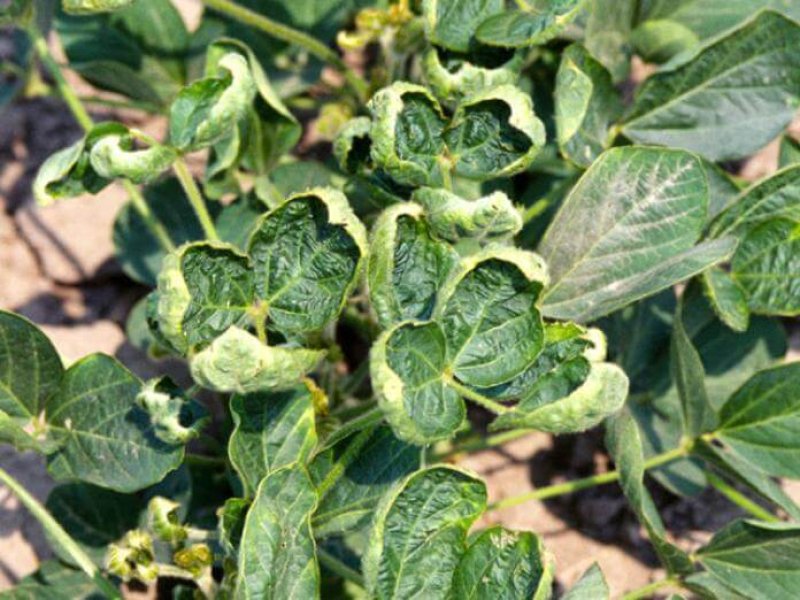Maybe it was just the weather.
Already this summer, Missouri, Arkansas and Tennessee have banned farmers from using the herbicide dicamba (Missouri later lifted its ban), after farmers complained that drift from applications of the chemical was harming or killing crops.
Ambulance chasing tort law firms immediately began advertising among farmers. Just last week, a class action suit was filed in federal court accusing Monsanto’s sales representatives of secretly giving farmers assurances that using unauthorized or “off-label” spray varieties would be acceptable. Plaintiffs include seven Arkansas farms affected by alleged dicamba drift this year, though more may be added.
Monsanto, BASF, DuPont and Pioneer are the agribusiness and chemical companies associated with the herbicide named as defendants. But the suit takes direct aim at Monsanto.
“This was Monsanto’s real plan: publicly appear as if it were complying, while allowing its seed representatives to tell farmers the opposite in person,” the suit alleges. “Their sales pitch: assure purchasers that off-label and illegal uses of dicamba would ‘be just fine.’”
What happened?
Dicamba has been used as a herbicide since the 1940s. The problems revolve around a new version — XtendMax with VaporGrip Technology — that’s designed to be used with the dicamba-resistant Xtend soybean developed by Monsanto. It was reformulated to be less prone to drifting. The chemical company BASF also has released its version of the revamped dicamba, called Engenia.
 Monsanto’s biotech soybean was designed to resist herbicides, including dicamba, long used to kill weeds but prone to drifting into neighboring fields. The company sold farmers the new seeds before it was able to provide an updated version of the herbicide, designed not to drift.
Monsanto’s biotech soybean was designed to resist herbicides, including dicamba, long used to kill weeds but prone to drifting into neighboring fields. The company sold farmers the new seeds before it was able to provide an updated version of the herbicide, designed not to drift.
The spate of new complaints that began in June originated with farmers who are claiming that the approved dicamba still drifts, even when used as directed. In Missouri, about 200,000 soybean acres were reported damaged. In Arkansas, about 600 farmers recorded problems before the state moved to ban the chemical. Tennessee soon followed suit after about 70 similar complaints. Meanwhile, other states where soybeans grow, such as Iowa have reported very limited drift issues; major soybean producer Georgia, and provinces in Canada, have reported no drift issues.
The Monsanto link this saga caught the attention of anti-GMO activists, including Nathan Donley, a scientist with the Center for Biological Diversity, which apparently saw an opportunity to leverage this problem to ramp up its opposition to crop biotechnology.
When you have two states enacting emergency bans of dicamba on the same day, it leaves no doubt this drift-prone pesticide has no business being sprayed anywhere. This is a perfect example of the danger of crops genetically engineered for herbicide tolerance — they trigger massive increases in use of these dangerous pesticides.
Assigning blame
To many farmers and and the agricultural companies that support them, ‘contamination’ issues stir intense emotions. “Is anybody out there surprised that dicamba drifts?” asked one commenter on AgWeb.
Just last year, an Arkansas cotton, soybean and corn farmer was shot to death in an argument over dicamba herbicide drift. The farmer was previously quoted in a Wall Street Journal article expressing concern that as much as 40% of his soybean fields had been damaged by dicamba drift and had filed a complaint over the situation with Arkansas officials.
The problem was, the reformulated dicamba was not released last year at the same time the dicamba-resistant seed was released. What did farmers do? Some used the original version of dicamba, which is known for its volatility. And the predictable result happened — drift was fairly widespread, affecting about 200,000 acres in Arkansas, Missouri and Tennessee.
Dicamba is a benzoic acid-based pesticide. It is used to kill plants before and during growth by spurring plant growth rates so much that the plant runs out of nutrients and starves itself.Monsanto was criticized by some for introducing the XtendMax prematurely. Last year’s drift problems also illustrate the perils of using a pesticide off-label, which happens more often than farmers, manufacturers and regulators want to admit.
Karl Haro von Mogel, plant scientist and co-founder of the BioFortified website, observed that not timing the release of both new dicamba and new dicamba-resistant soy and cotton created a dilemma for some farmers:
This set up a bizarre situation where they could buy the soybeans but were told not to spray the herbicide. Farmers desperate to control weeds might consider breaking the rules to get the benefits at the potential expense of someone else. This is a classic Prisoner’s Dilemma, and the result is that it could make the tool unavailable for many farmers to use. I would have considered delaying the release of the new soybeans until the associated herbicide was approved for use.
Another possible culprit is the nozzle farmers used to spray dicamba. BASF managers Dan Westburg and Gary Schmitz told Delta Farm Press that older spray nozzles make 30-40 percent fine particles, which drift more easily in higher winds or temperature inversions (with cooler, dense air near the ground). New technologies, they noted, make for coarser droplets that don’t drift as far. Even though BASF gave away new nozzles for free, they noted that “some farmers are worried about getting adequate weed coverage,” Westburg said.
Finally, not all allegations of dicamba drift actually are dicamba drift. Identifying the root cause of this type of damage is difficult — a lot of other pathogens and chemicals can cause similar-looking damage. According to Robb Fraley, Monsanto’s chief scientist:
While leaf cupping can be caused by dicamba, it can also be caused by many other things, including environmental factors, diseases and other crop protection products. For that reason, diagnosing the problem can be complex, especially when there have been relatively few inquiries in closely neighboring states. In fact, Arkansas, the only major cotton and soybean growing state where Monsanto does not sell XtendiMax®, has received nearly twice as many inquiries as every other state combined.
This doesn’t let anybody off the hook, but makes for a cloudy picture of what’s behind the pesticide drift fiasco.
Andrew Porterfield is a writer and editor, and has worked with numerous academic institutions, companies and non-profits in the life sciences. BIO. Follow him on Twitter @AMPorterfield.































